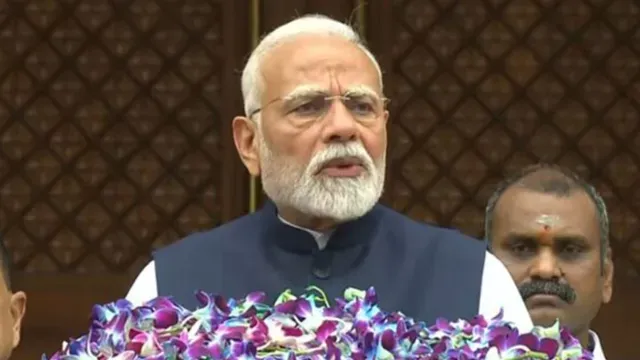- By Shibra Arshad
- Sat, 11 Oct 2025 10:53 AM (IST)
- Source:JND
The Prime Minister Dhan-Dhaanya Krishi Yojana (PMDDKY) is a comprehensive agricultural development scheme launched by the Government of India to enhance farm productivity, promote sustainable farming, and improve irrigation facilities in 100 underperforming districts across the country.
Key Features Of Dhan Dhanya Schme
District Selection: 100 districts selected based on low productivity, moderate crop intensity, and below-average credit parameters
- Convergence Model: Merges 36 schemes from 11 Union Ministries to create a unified agricultural support system
- Annual Budget: Rs 24,000 crore for six years (2025-26 to 2030-31)
How Will Dhan Dhanya Krishi Yojana Benefit Farmers
- Enhance Agricultural Productivity: Improve farming efficiency through modern technology and better land utilization
ALSO READ: Lucknow Cab Driver Murder: Suspect Ajay Singh Shot, Arrested In Police Encounter
- Promote Crop Diversification: Encourage farmers to grow multiple crops for better income stability
- Improve Irrigation Facilities: Develop irrigation infrastructure to support year-round farming
- Facilitate Credit Availability: Provide short-term and long-term loans to farmers
Benefits- Higher Crop Yields: Improved farming practices and technology to increase crop yields
- Increased Income: Better crop management and irrigation support to improve farmer incomes
- Sustainable Practices: Promotion of organic farming and sustainable agricultural practices
- Women Empowerment: Support for women farmers through training, loans, and market linkages
Implementation- District Dhan-Dhaanya Samiti: District-level committee to oversee scheme implementation
- National Committee: Offers direction, monitoring, and overall review, coordinated by NITI Aayog
- Digital Dashboard: Tracks 117 Key Performance Indicators (KPIs) to ensure transparency and accountability
ALSO READ: Meerut Traffic Relief: Bhaisali Bus Stand To Be Relocated; Two New Terminals Planned
The scheme aims to benefit 1.7 crore farmers, particularly small and marginal farmers, and achieve self-sufficiency in foodgrains, pulses, and oilseeds.

